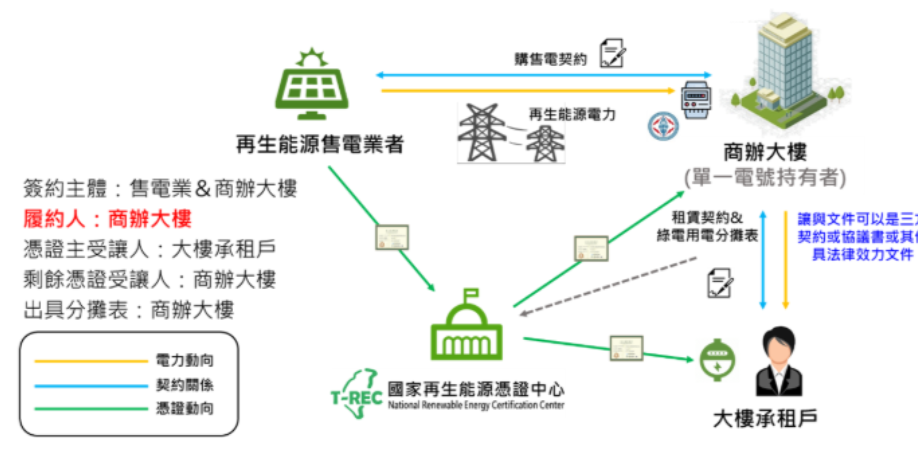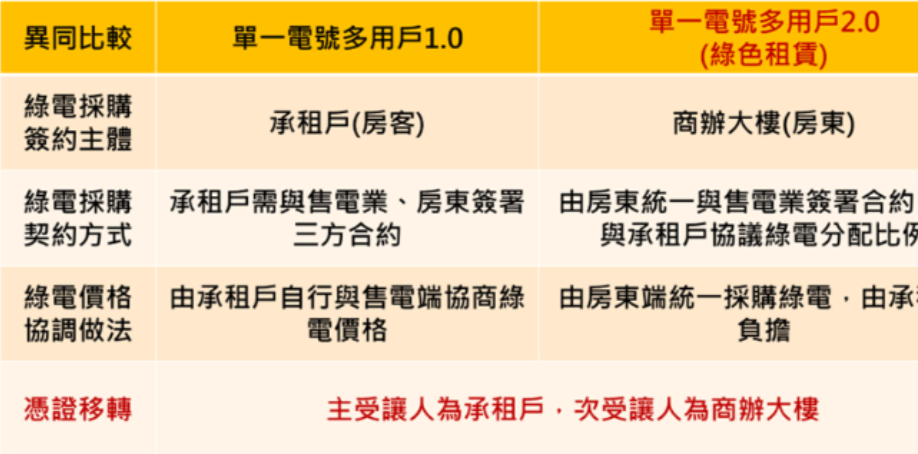High-Capacity Electricity Users must fulfill their renewable energy commitments within five years from the year they receive notification from Goverment. They can meet obligations by installing renewable energy generation equipment, purchasing green power and certificates, or setting up energy storage systems—or through a combination of these methods.
Three Common Methods for Installing Renewable Energy Systems
1. Installation at the Obligated User’s Power Consumption Site
- The user installs renewable energy equipment at the notified address, either as a new setup or utilizing previously installed but non-selling equipment to fulfill obligations
2. Installation at a Different Facility Owned by the Same Legal Entity
- Users install renewable energy systems at another factory owned by the same corporation.
- Verification requires company registration forms, land/building certificates, and factory registration documents.
3. Installation at an External Power Consumption Site
- Users lease rooftops or land from other companies to install renewable energy equipment.
- In addition to self-use power registration documents, they must also apply for grid transfer through Taipower to comply with self-consumption regulations.
Purchasing Green Power & Certificates
For users unable to meet obligations through direct installation, purchasing certified renewable electricity from Jincheng Energy or other licensed providers is an alternative.
The required electricity volume is calculated as: Obligated installation capacity × Annual solar energy generation factor (1,250 kWh/kW).
Users must complete purchases and consumption within the obligation year and obtain the necessary certificates by the end of February of the following year. This ensures compliance with the Energy Administration’s green certificate reporting and direct power supply proof requirements
1. Single Electricity Account with Multiple Users
- In shared power accounts (e.g., buildings, complexes) where non-obligated and obligated users share a single account, an electricity retailer applies for certificate transfers.
- Required documentation includes:
- Green certificate transfer application
- Supporting agreements
- Demonstration project application
- Taipower green power transfer contract
- Usage contracts between the main account holder and individual users
- Once reviewed and approved, the certificate transfer process follows the Renewable Energy Certificate Implementation Guidelines
2. Green Leasing Model – Single Account Multi-User 2.0
- Building owners manage energy allocation and green power distribution, serving as integrators and advocates.
- Centralized green power procurement ensures efficient allocation among tenants.
- The Renewable Energy Certificate Center reviews usage data from landlords’ distribution reports to determine transfer allocations.


Energy Storage Installations
Users choosing energy storage as their fulfillment method must comply with the Renewable Energy Development Act, Electricity Act, and relevant national standards.
Requirements:
- Storage capacity = Obligated installation capacity × Minimum supply duration (2 hours).
- Discharge power must average 80% or higher for compliance.
- Two mandatory deep discharge tests per year (one every six months) to validate performance and capacity compliance.
